Eleven artists, one continent
It is said that this is the African century*.
To celebrate WPP’s 30th Annual Report, we’re featuring (mostly) contemporary paintings from the sub-Saharan African countries of Tanzania, Kenya and South Africa.
The 11 artists we’re showing have widely differing backgrounds; their subjects as varied as the continent itself. All are inspired by Africa and have their own authentic African voice. Many are collected by individuals and institutions and, famous in their home countries, are increasingly making a mark on the international stage.
Africa has unique characteristics that contribute to the power of its art. Its heritage art objects, mastered over millennia, include highly stylised wood carvings, textiles, basketry and beadwork. They are some of the world’s most inspirational artefacts and artistic points of reference. The vast African landscape informs the work too. Its open skies, diverse people, rich wildlife and climate provide spectacular texture, light and colour.
The motivation to assert individualism regardless of circumstance or background is strong. There’s also an independent and liberated approach to constructing it. Paint, mixed media and upcycled materials are all applied with style. These unique sensibilities produce strident and flamboyant work abundant in meaningful personal statements, rich in social, political and economic commentary.
A glimpse into this powerful combination can be seen in the animal portraits depicted by the Tingatinga school of painters. The movement began with the late Edward Saidi Tingatinga, who was born in the early 1950s on the Tanzania and Mozambique border. In the 1960s, he started making and selling naïve and surrealistic paintings created with inexpensive or found materials, such as hardboard and bicycle paint. His subjects, mainly African wildlife and savannah, teem with joy and energy.
His legacy continues in the Tingatinga Arts Cooperative Society. Its brightly patterned style is now generic and practised by generations of artists. Works by the Cooperative’s Saidi Chilamboni, Ajaba Abdallah and the late Omari Amonde are featured in this Report. The Tingatinga visual language has even been translated into an animated children’s TV series originally commissioned in the UK and made in Nairobi.
Abstract and codified visions of wildlife are a frequent feature in Tingatinga artworks and beyond. A thick texture resembling a woven basket can be seen representing feathers in the bodies of Tingatinga artist Ajaba Abdallah’s set of mythical birds. Spots that look like beadwork rather than fur fill out flat shapes in Saidi Chilamboni’s animals.
Kenya boasts a thriving contemporary art scene and one that is gaining recognition internationally. Known as the painter’s painter, Richard Kimathi is one of the country’s most acclaimed artists. His cat has mask-like facial features. Its eyes stare out in a knowing gaze. Kimathi trained in graphics before turning to fine art. He was commissioned by the UN to design a limited edition stamp in 2000 and in 2014 exhibited in London alongside other East African artists.
Working in oil on canvas, Kenyan James Mbuthia’s paintings have a dream-like quality. He also makes sculpture, woodcuts and recycled pieces. He is founder of Art Without Borders Kenya, a workshop that enables artists to bring art to children in need. His work has been extensively exhibited in Kenya, has appeared in many books and publications, and is widely collected.
By contrast, Kenyan artist Wawi Amasha sells her work in California. Her fine art crosses over into design work and vice versa. She employs a medley of traditional patterns and colours in her paintings. There’s no room for mechanical perspective in her pieces, which often feature crowds of stylised dancing women. She is inspired by African traditions and the continent’s natural way of life.
Kenyan colourist Mary Collis is one of her country’s leading expressionist artists and an ardent champion of contemporary African art. Based in Kenya and South Africa, she uses colour to depict the energy and beauty of the natural world in uplifting and almost transcendental paintings. Swathes of bright hues capturing the African light make up her signature style. Her subjects range from figurative landscape to complex abstract. Collis has had numerous one-woman exhibitions in Africa, Europe and the Americas. She was co-founder of RaMoMA modern art museum in Nairobi. Collis’s work is collected all over the world.
Nairobi-born Peterson Kamwathi is recognised as one of Kenya’s most inventive conceptual artists. He produces collages of abstract generic figures made from thick layers of mixed media on canvas and paper. Much of his work has been in printmaking, where he is a master of the woodcut. There is often political content to his paintings as in his ‘Kenyan Bulls’ series which convey his views through the imagery of cattle, the traditional measure of wealth and status across the country. Kamwathi has been artist-in-residence at Kentucky University, Bath Spa University and the London Print Studio. Beyond the continent, his work has been exhibited in New York, London, Edinburgh, Vienna, Washington and Amsterdam. He sells worldwide.
Katharine Ambrose has spent most of her adult life in South Africa. Recognised for her captivating Lowry-like depictions of daily rural and township life, she paints complex scenes melding people and landscape in a blaze of activity. Ambrose employs oil, acrylic and mixed media to create her panoramas busy with communities in their surroundings. She works directly in the field, painting school, rural or village scenes. Her work is collected by many South African institutions.
South Africa’s Frank Ross makes his striking 3D artworks using a tapestry of discordant acrylic paint and mixed media. Densely painted sections are supplemented by emphatic outlines and hammered-on rubber or metal. He started out working in a canning factory and ran his own business before being compelled to make art in middle age. A prolific artist, his paintings show the intensity and toughness of township life. People, buildings, vehicles and landscape coalesce in life-affirming collages. He had a sell-out exhibition in Switzerland in 2009.
Gallery
James Mbuthia, Kenya
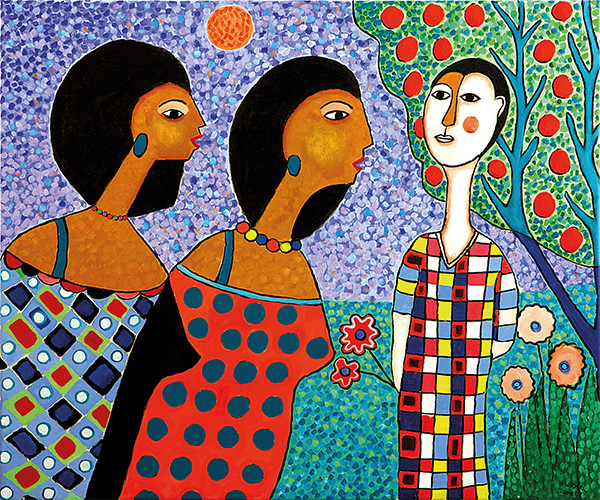
Who Do I Marry
Richard Kimathi, Kenya
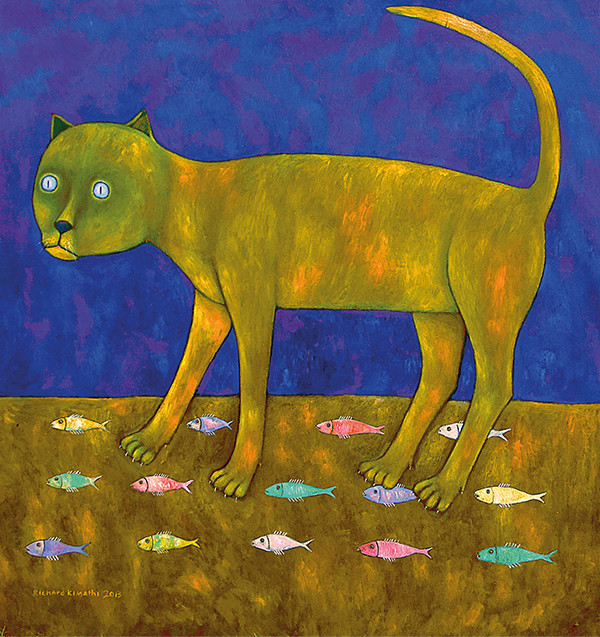
Guard Of Honour
Katharine Ambrose, South Africa
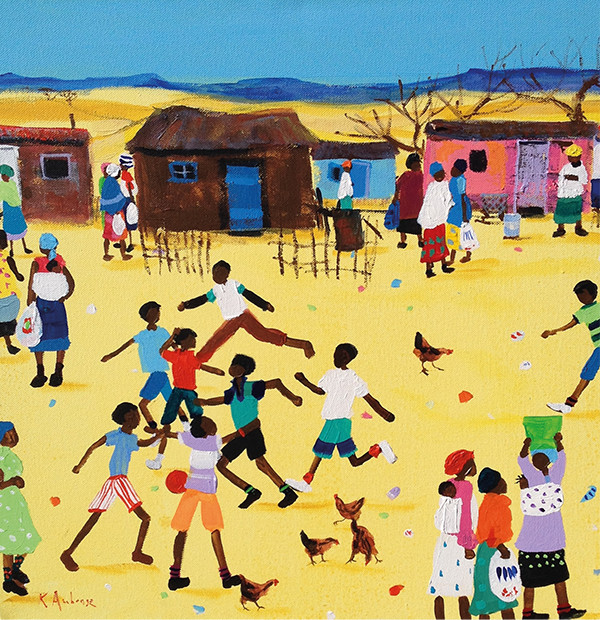
Saturday Soccer
Katharine Ambrose, South Africa
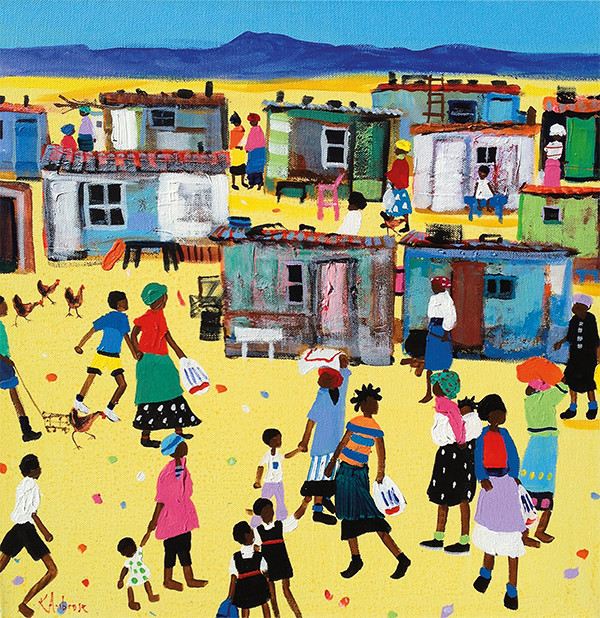
Shopping Day
Edward Saidi Tingatinga, Tanzania
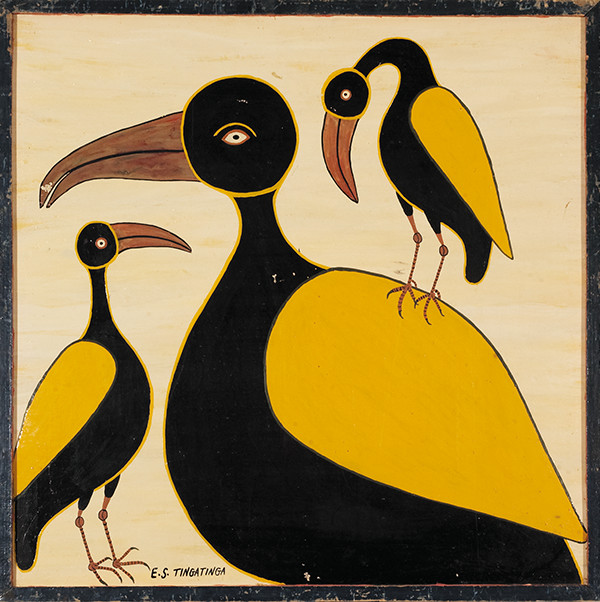
Birds Family
Ajaba Abdallah, Tanzania
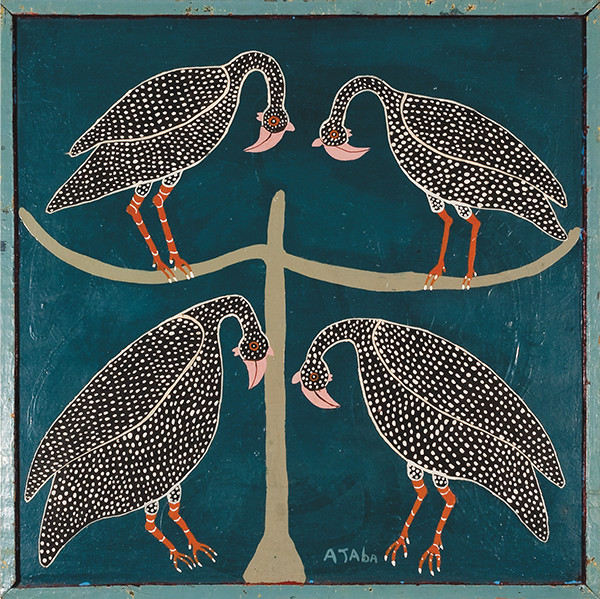
Birds
Peterson Kamwathi, Kenya
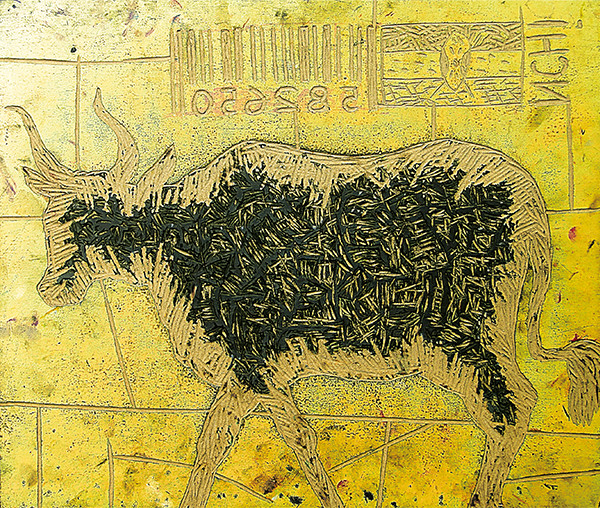
Nchi 1 Barcode
Mary Collis, Kenya
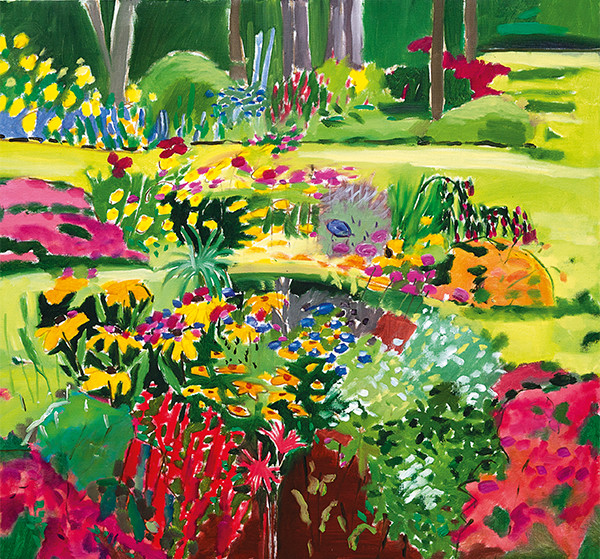
New Erica’s Garden
Wawi Amasha, Kenya
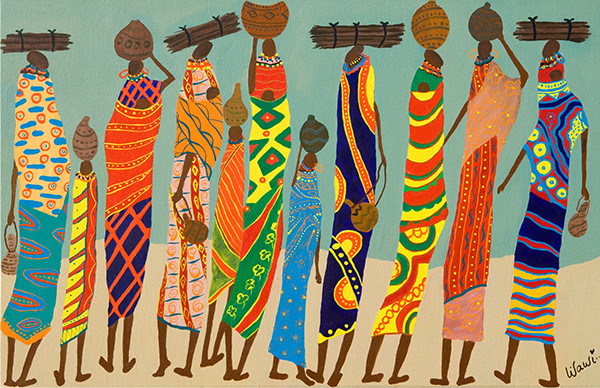
Daily Chores
Frank Ross, South Africa
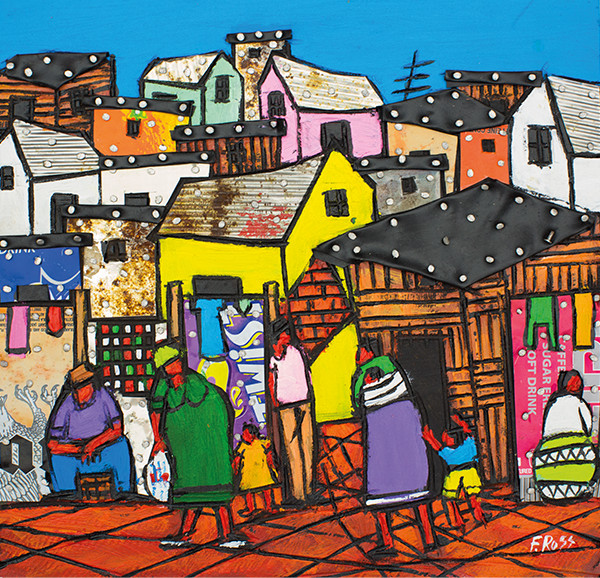
Cape Township
Frank Ross, South Africa

Training for Soccer
Saidi Chilamboni, Tanzania
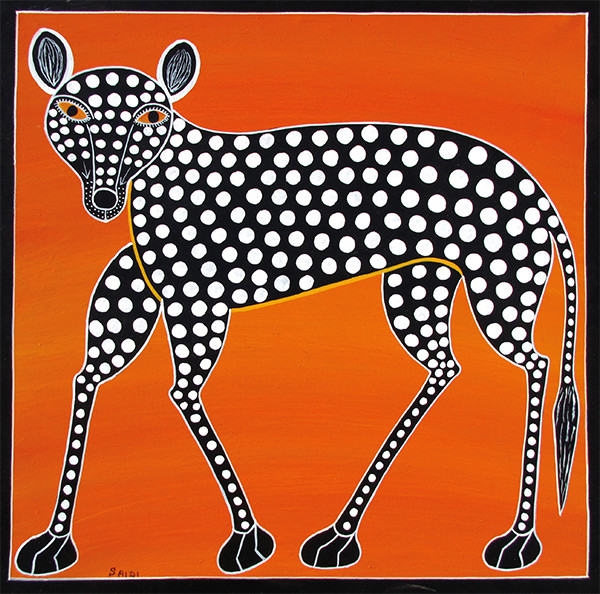
The Leopard
Omari Amonde, Tanzania
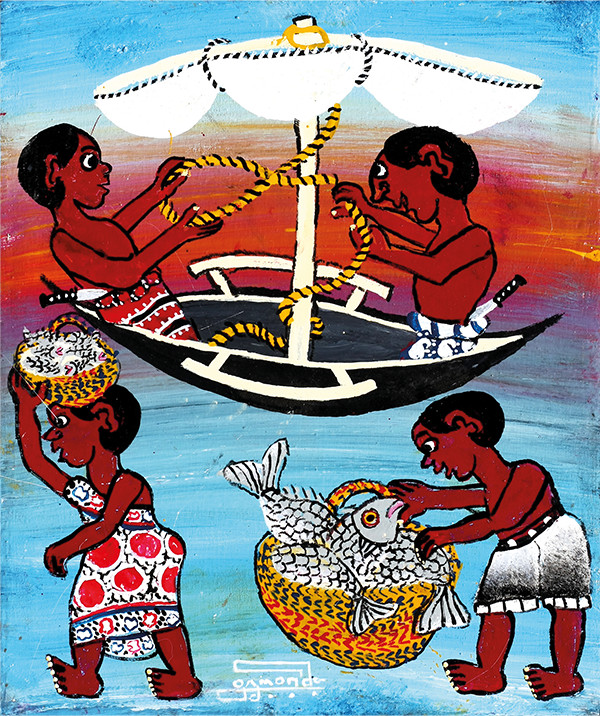
Bringing In The Fish
For the past nine years, WPP’s Annual Reports have drawn visual inspiration from different geographical markets important to our clients and our companies. Since 2005, we have looked to artists from India, China, Africa, Brazil, the US, Eastern Europe, the UK, Indonesia and last year, Mexico, for our visual cue.
This year we focus again on Africa – “a newly-empowered continent, one full of possibilities and confident of its future,” in the words of WPP CEO
Sir Martin Sorrell – to feature (mostly) contemporary artists from Tanzania, Kenya and South Africa, whose joyous vibrant work is as diverse as the continent itself. Altogether 11 artists’ works are included in the Report.
In the past 10 years, the number of people employed by WPP companies across the African continent has increased almost 20-fold to over 28,000 people (including associates).